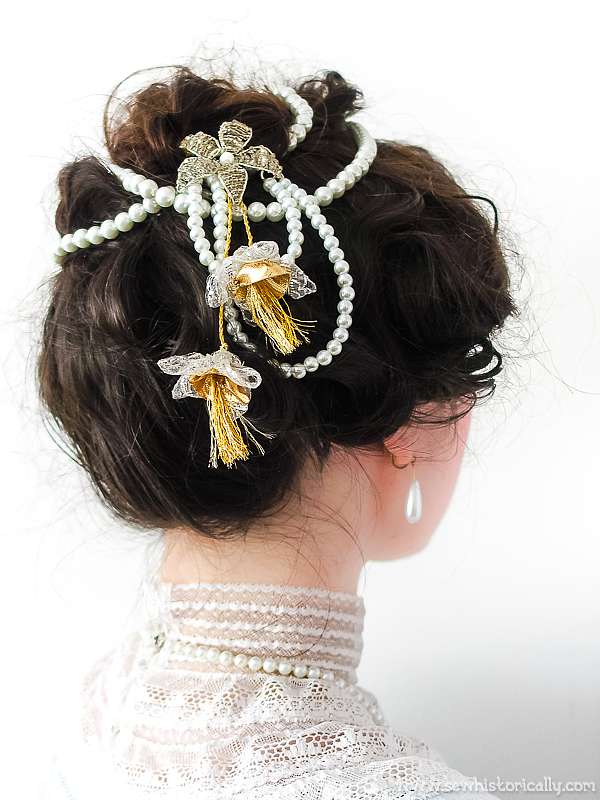
‘Much display of jewelry is out of place for young ladies, and the kind of jewelry to be worn demands as careful consideration as that of the dress itself.’
The ‘Household Companion: Book Of Etiquette‘ of 1909 gives advice about how jewelry was worn in the Edwardian era.
Related: How To Dress In The Edwardian Era
When To Wear Jewelry
In The Morning
‘Only a simple ring or two are admissible, with, perhaps, a gold brooch, and a watch and chain […]
In The Street
To wear much jewelry in the streets is in very bad taste, while in large cities it may subject the wearer to danger from robbery. […]
In The Evening
Diamonds, pearls, and transparent precious stones generally belong to evening costume, […] they should not be worn in the earlier parts of the day […]
Travel
In traveling it is inadvisable to make a display of jewelry’ because of the danger of robbery, especially if a lady is traveling alone.’ (Household Companion: Book Of Etiquette, 1909)
Wear Inexpensive Jewelry
Not the most expensive jewelry is the best jewelry: ‘A simple and inexpensive jewel may occasionally have the effect of an exquisite work of art, while a large and showy brilliant may give the impression of vulgar display or showy overdress.’ (Household Companion: Book Of Etiquette, 1909)
Pearl Necklaces
‘Just at present the pearl is the most popular stone that money can buy […] There was a time when a diamond necklace was thought just about the best thing imaginable, but while it is swell, glittery and good to gaze upon, it cannot commence to compare with the modest, retiring strand of pearls loosely twisted about the throat and permitted to fall almost to the top of the low waist. Such a necklace is quietly elegant and you may be sure that the girl who is wise enough to choose pearls instead of diamonds is a thorough aristocrat.’ (San Francisco Call, 1902)
Faux Pearl Jewelry
There were already fake pearl necklaces in the Edwardian era, which ‘cannot possibly be distinguished from the genuine pearl of the ocean, being identical in shape, colour, and radiance.’ They are sold between one and three guineas. Here‘s a picture of a faux pearl necklace which is sold for three guineas. ‘There is a tiny knot between each pearl, as would be the case in a row of genuine pearls.’ (The Lady’s Realm, 1911)
Related: How To Make A Knotted Pearl Necklace